How many people cross the Channel in small boats and how many claim asylum in the UK?

The UK government wants to send some asylum seekers to Rwanda to deter people from crossing the English Channel in small boats.
Prime Minister Rishi Sunak says if he wins the general election, the first flights will leave for Rwanda later in July.
But Keir Starmer has pledged to scrap the Rwanda scheme if Labour wins and would instead use counter-terrorism powers to stop gangs smuggling people across the Channel.
How many people cross the Channel in small boats?
As of 18 June, 12,315 people had crossed the Channel in 2024 - above the numbers for the same period in the previous four years.
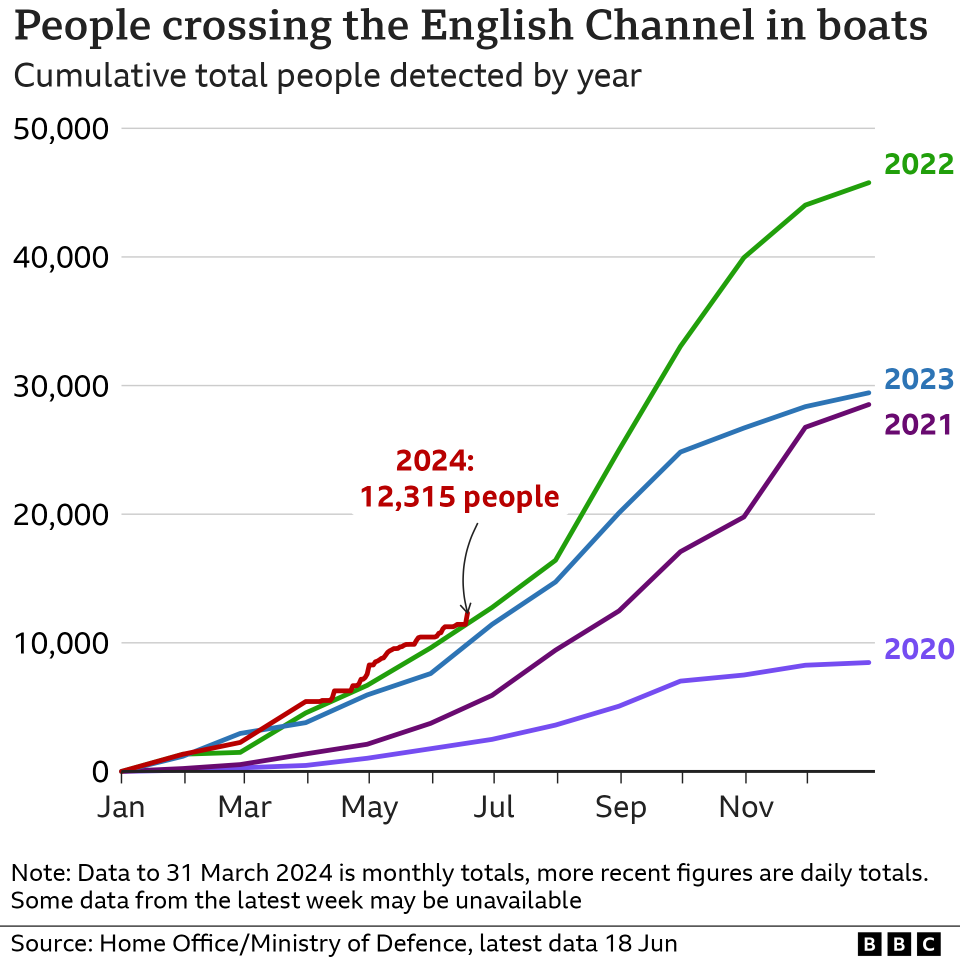
In 2023 as a whole, 29,437 people came to the UK this way.
That was a big drop from the 2022 total of 45,755, which was the highest number since figures began to be collected in 2018.
Since 2018, nearly 120,000 people have come to the UK by this route.
Who is crossing the Channel in small boats?
In the year ending March 2024, Afghans were the top nationality crossing the Channel, making up just under a fifth of all small boat arrivals in this period.
Iranians (12%) and Turkish nationals (11%) were the next two most common nationalities to arrive this way.
About 85% of small boat arrivals in the 12 months to March 2024 were male and - where age was recorded - nearly a fifth were between 25 and 39 years old.
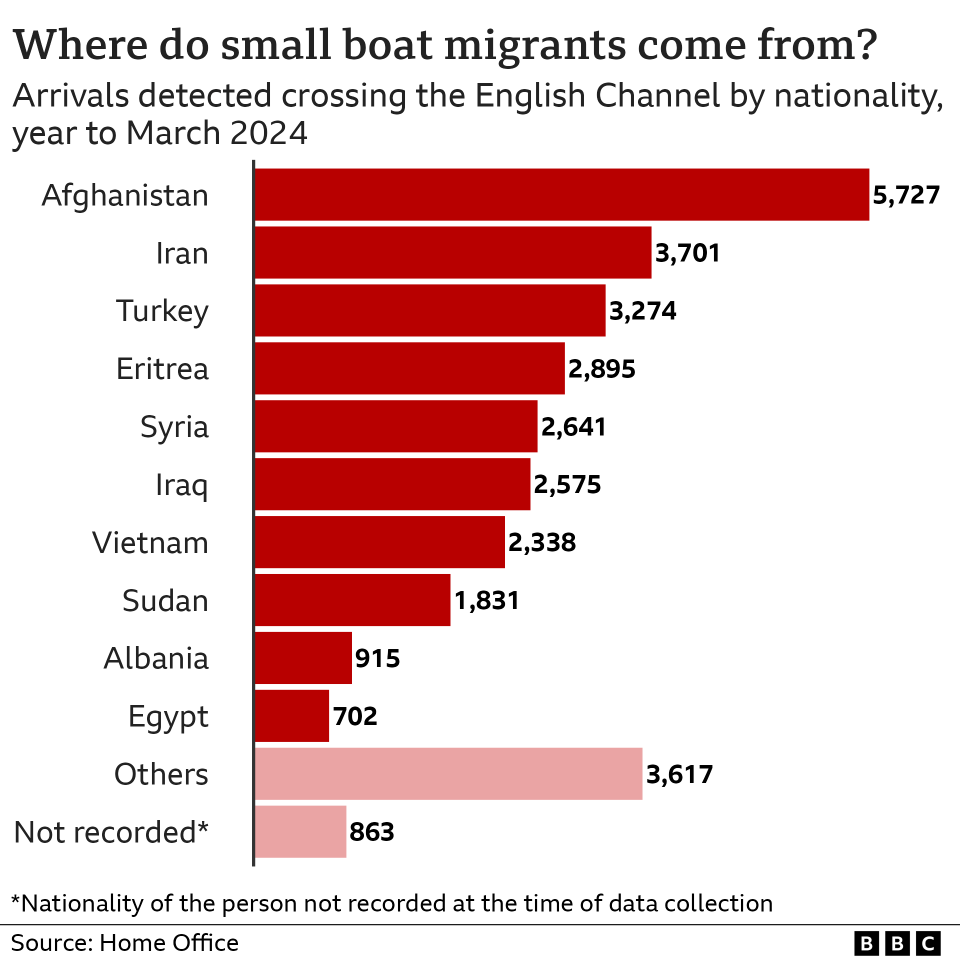
The International Organization for Migration estimates that at least 159 migrants died in the English Channel between 2018 and 2023.
Five people, including a seven-year-old girl, died on 23 April.
On 6 June, around 80 migrants, including at least three children, were rescued after their boat got into trouble.
How many people seek asylum in the UK?
More than 84,000 people claimed asylum in 2023.
In the whole of 2022, just under 100,000 people requested asylum. Small boat arrivals accounted for about 45% of those. The equivalent figure is not available for 2023.
The number of annual applications for asylum - including dependants - peaked at about 103,000 in 2002, as people fled conflicts in Afghanistan, Somalia and Iraq.
Claims then fell sharply, dropping to a 20-year low of 22,600 in 2010.
However, numbers rose again throughout the 2010s, as refugees fled Syria.
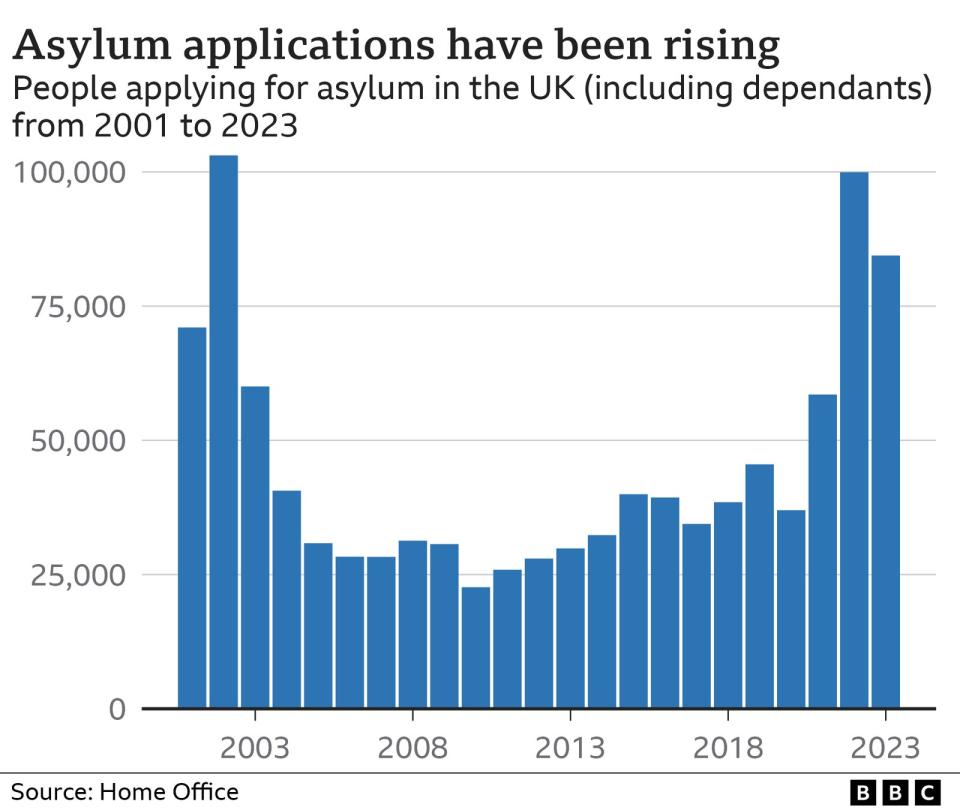
Where do UK asylum seekers come from?
In 2023, the largest number of UK asylum seekers came from Afghanistan - 9,307.
The next biggest group, about 7,400 people, came from Iran, followed by Pakistan, India, and Bangladesh.
In 2022, Albanians were the top nationality with more than 17,300 people (including dependants) claiming asylum. Most of these (73%) arrived on small boats.
Ukrainian refugees who came to the UK after Russia's invasion of their country are not included in these figures.
As of 11 June 2024, 259,200 visas had been issued to Ukrainian refugees who have come through legal routes set up by the UK government.
There are separate arrangements for a few other specific groups to come to the UK, such as Afghan refugees and some Hong Kong citizens.
How many asylum cases are waiting to be processed?
Some people wait several months or even years for their claims to be considered.
Delays in the UK system have created an overall backlog of more than 128,000 claims.
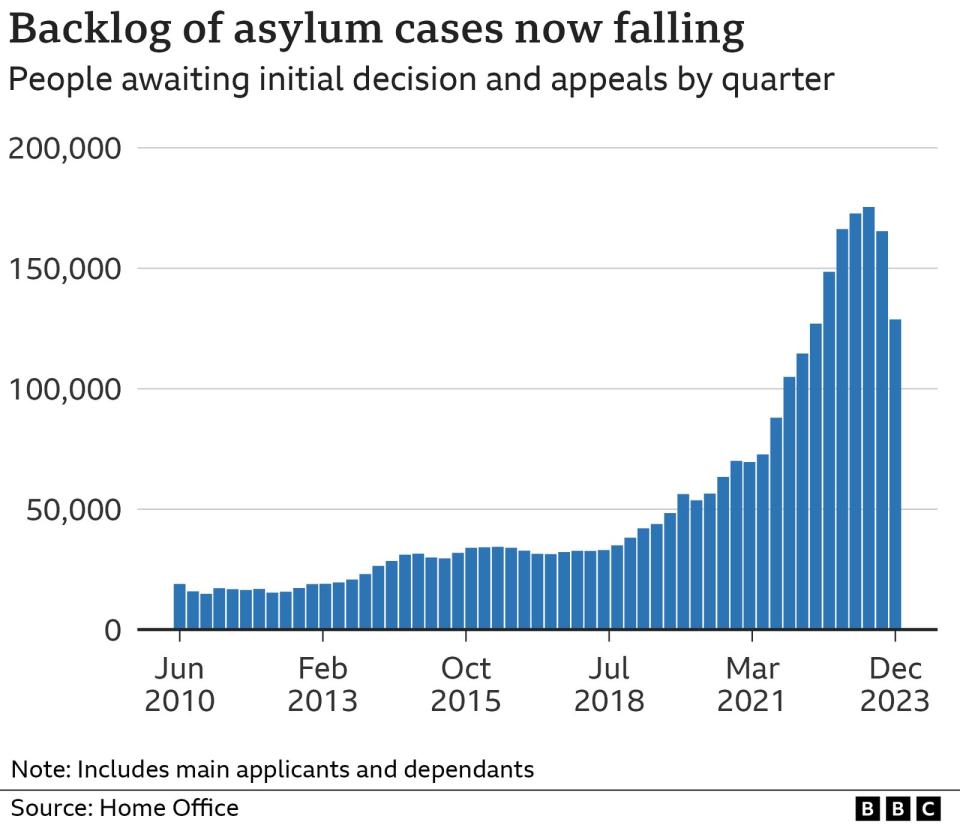
The prime minister pledged to clear older claims by the end of 2023, but 4,500 "complex cases" were still awaiting a decision at the end of December.
Official figures show that on 14 April 2024, 2,377 of those applications were still waiting for an initial decision.
How many asylum seekers does the UK send back?
The Home Office can remove people with no legal right to stay in the UK, or refuse to let them enter.
In 2023, 6,014 people who were not granted asylum were returned to their home country. This is double the number of returns in 2022 (2,931), but that is mainly because of a rise in Albanian returns, which increased from 988 to 3,369.
In the same year, 1,889 people who arrived in small boats were returned. Between 2018 and 2023, 2,580 people who came to the UK in small boats were returned, which is 2% of all small boat arrivals in that period.
In December 2023, the Home Office revealed that only 408 non-Albanians who had come to the UK on small boats had been returned to their home countries since 2020.
How do UK small boats arrivals compare with those to Europe?
In 2023, there were 263,048 sea arrivals in Europe, with Italy receiving 60% of those (157,314).
Spain received 57,071 people and Greece 41,561.
As at 17 March 2024, almost 40,000 people had arrived into Europe via the sea since the start of the year.
The number of arrivals in Europe peaked in 2015, when more than a million people crossed its borders - the majority fleeing the Syria conflict.
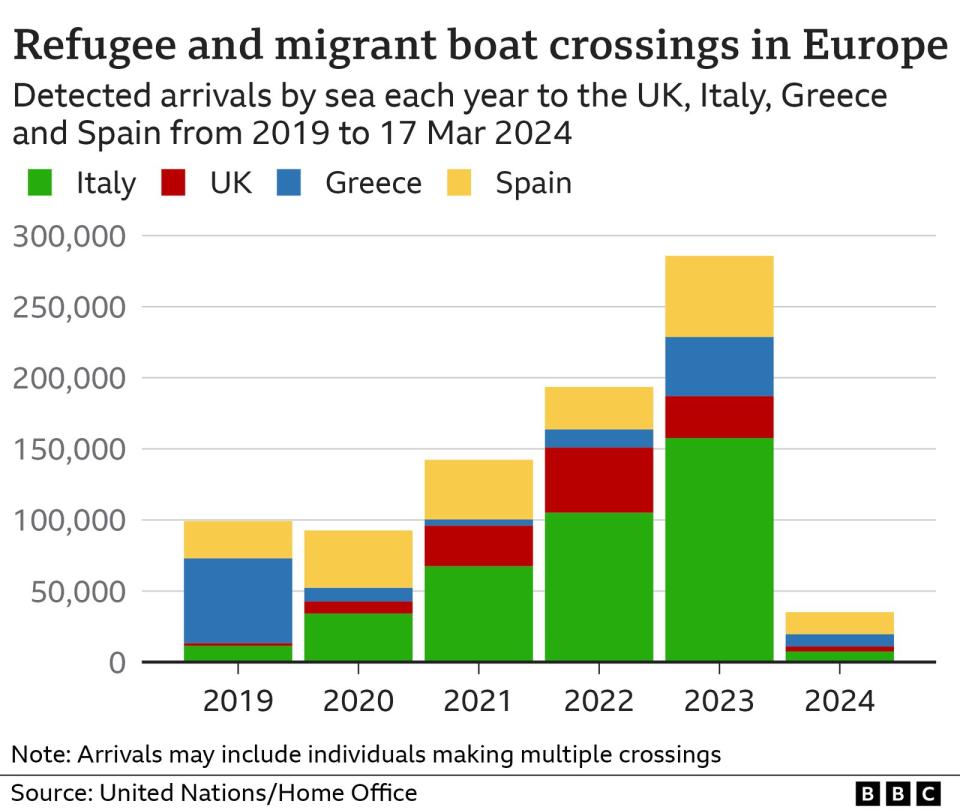
How many people apply for asylum across Europe?
In 2023, the UK had the fifth highest number of people claiming asylum in Europe.
With 329,035 applicants, Germany received more than a quarter of all first-time asylum applicants within the EU.
Spain had the second highest number (160,460) followed by France (145,095) and Italy (130,565).
In 2023, the UK government made initial decisions on 93,303 asylum applications - including people attached to them such as children or other dependents - and granted more than two thirds of them (67%).
In the same period, Germany made 217,430 asylum decisions, and granted 62%.
France - a country with a similar-sized population to the UK - made 132,695 decisions, and granted 31% of them.


